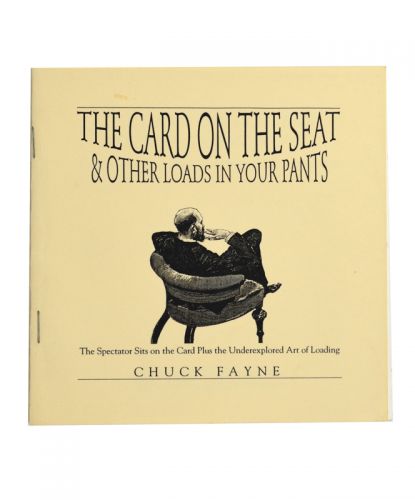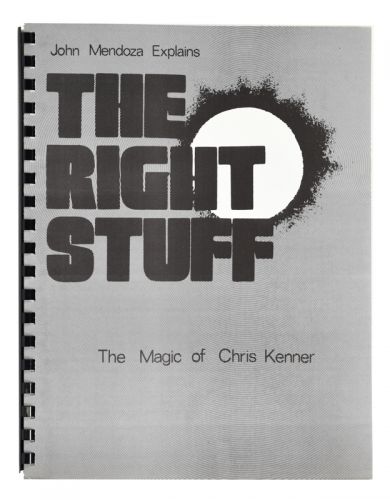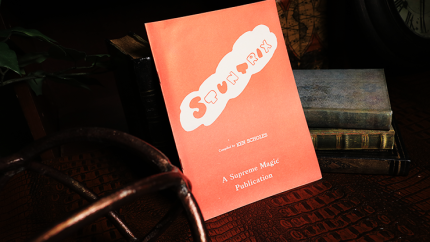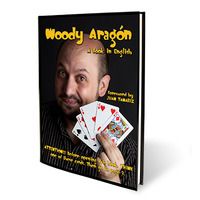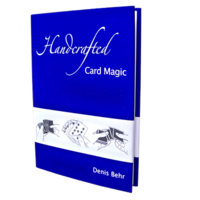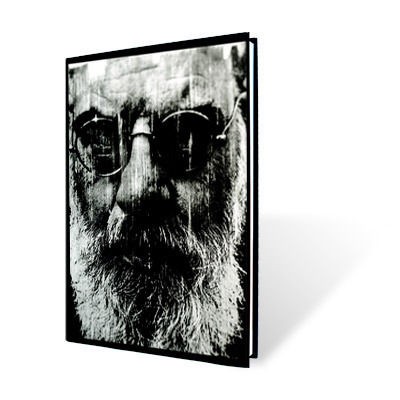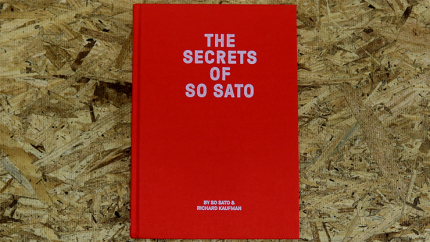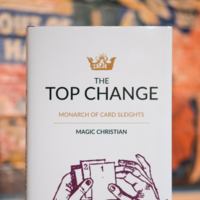This is a small manuscript which describes two routines. The first is the classic effect wherein a spectator apparently forms a card trick for the magician by following the mage’s instructions, and eventually the magician’s selected card is found beneath the spectator, on the seat of the chair where he or she perches.
In the second routine, five spectators each select and sign a card. The cards are returned to the deck, whence they vanish, with one selection appearing in the pocket of each spectator (although not in fact his or her own card).
The first effect will be known to many; one version can be found in The Magic of Eddie Fechter by Jerry Mentzer, recently expanded and re-published. Nevertheless, Mr. Fayne properly points out that while this plot is well known, it is rarely seen. Mr. Fayne, however, has been closing his close-up performances with this trick for some years. His obviously extensive experience enables him to offer much valuable advice, and one major improvement to the plot—the card to be discovered under the spectator is signed! So as not to be accused of writing a magic shop advertisement, I must add that the signature is in fact that of the magician, not of the spectator, but Mr. Fayne makes an excellent case for the psychological strength of this significant addition, and offers much insight as to how to get the most out of it.
The pamphlet is nicely produced, in a distinctive, small format that is decidedly, uh, cute. Mr. Fayne writes in a tone that is reflected in his mildly scatological title. While I confess I have never been much of a fan of relentlessly humorous writing in technical material, Mr. Fayne’s style is at least consistent and entertaining.
There is little doubt in my mind that the power, of this effect, combined with the intriguing aspects of its method, certainly warrant a narrowly-focused manuscript on the subject. While I believe that Mr. Fayne is no doubt qualified to write a comprehensive treatise on the subject, I am compelled to point out that he has yet to do so here. This seems rather like a somewhat hastily produced, if cleverly designed, first attempt. No doubt there is still much to tell, by way of instruction, and as well, in recounting some of Mr. Fayne’s substantial experience. Illustrations would have been a great benefit; I have re-read the description several times of the actual loading of the card—the key technical element of the method—and there are aspects which are still, unfortunately, unclear to me. Nevertheless, there is much invaluable advice on the choice and management of the spectator—the most important elements in the success of a routine of this nature—and so I do recommend Mr. Fayne’s pamphlet to any magician interested in exploring this effect, and enjoying a good read along the way.


